Spotlight on Ryan Kelly
Nov 13, 2017
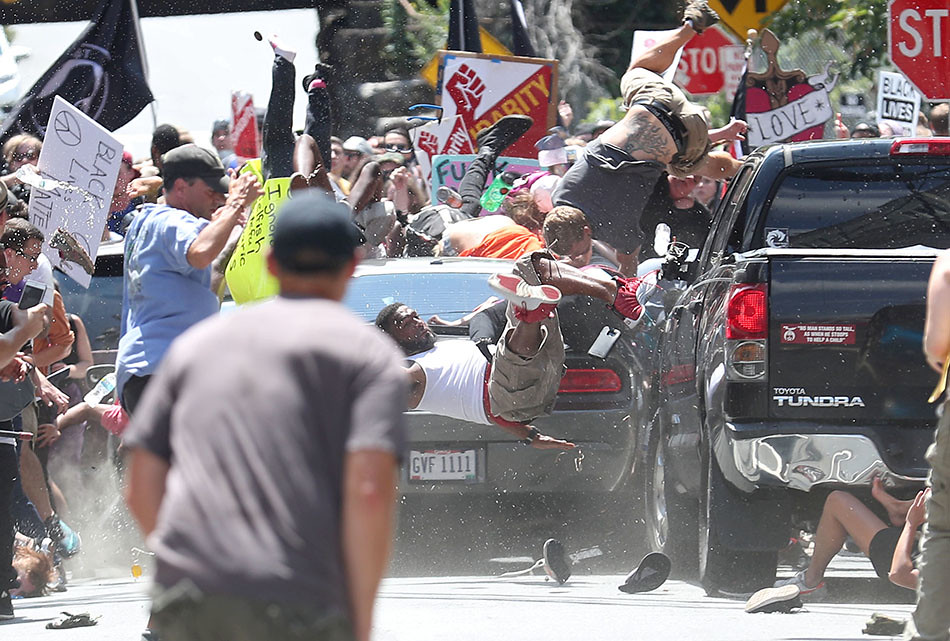
TID:
Thanks for taking the time to talk, Ryan. I know you’ve been interviewed a lot regarding this tragic image. It’s become iconic, in many ways, a symbol of that terrible action. While much has been covered already, what is something that you think hasn’t been covered during these interviews?
RYAN:
I think the value of having a professional staff photojournalist on the scene can’t be overstated. There were hundreds of people on that block, and those pictures didn’t exist from anyone in the crowd, with cellphones or from bystanders.
That happened because of years of experience. It’s just a shame to see newsrooms shrinking and journalists leaving, or being laid off, and the value of quality photojournalism is declining. I think it hurts everybody. As that series of photos show, there’s still a lot of power in the still image. If there aren’t photojournalists out there doing the work, those pictures aren’t going to happen. I think that’s a shame.
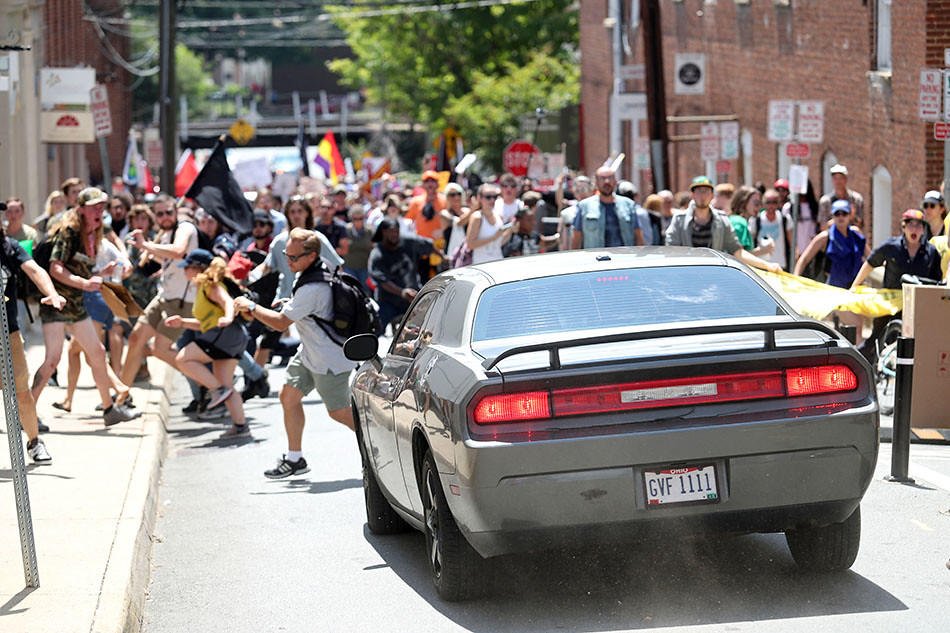
TID:
Can you expand on this?
RYAN:
I think the experience of being in new places, with new people and making pictures every single day - it becomes second nature. Obviously none of it was planned for in these pictures, but the years of being in new situations all the time, means I did have the reaction and the instinct to grab my camera when something was happening, and make some quick pictures that I couldn’t possibly have prepared for.
That instinct wouldn’t have been there if it weren’t for the years of doing this on the job everyday. Frankly, even if that had happened on the first year of my job, I don’t think I would have the instincts to make those pictures.
TID:
What was it like when you saw the image?
RYAN:
That was strange because it didn’t happen right away - it was such a traumatic moment. He drove his car down the street, he hit the people and he backed up immediately. I was taking pictures the whole time. Once he backed up and went around the corner, I took off running after the car, assuming something more would happen, that there would be more to take pictures of. Once I got to the top of the street, I figured out he was gone already, I ran back down to the street to where everyone was.
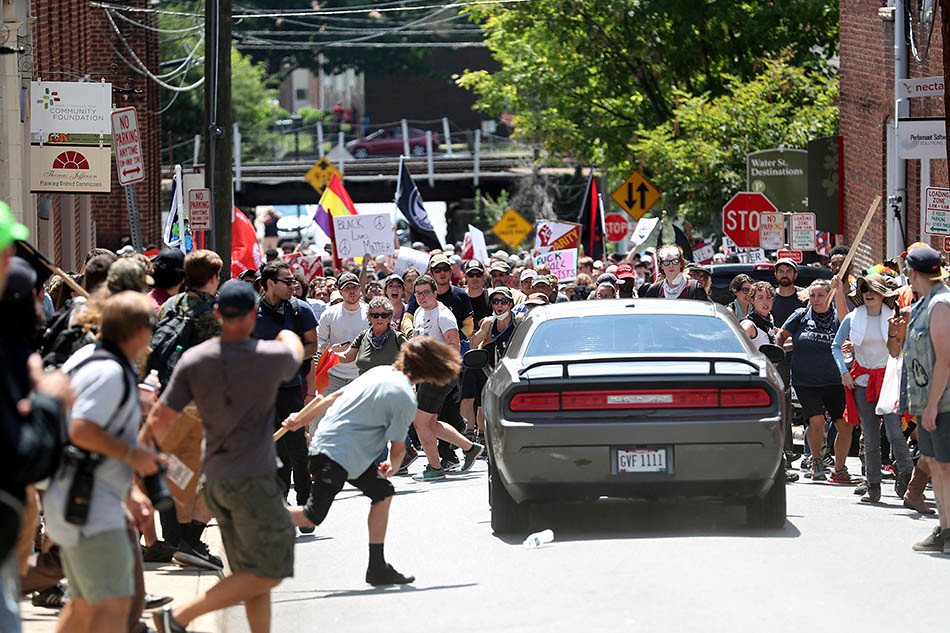
I still hadn’t looked at my camera yet. After a couple of minutes, that was the first time I looked down at my camera and realized, oh, I actually have a picture of this happening, because up until that moment it could just as easily have been blurry, out of focus. It wasn’t until a couple of minutes later that I knew I had a picture of the moment at all. It was a private moment, looking at my photos by myself in the middle of what was still a pretty chaotic situation.
It took me out of the experience amidst this crowd, noise and chaos for a moment, as I realized I actually had something worth sending back - something that would tell the story of what just happened. The true impact of the photos didn't register until after I grabbed my laptop and started editing on a computer and saw them blown up full size. That’s when I realized how awful it was. Because, at the time, it was tough to tell how many people would have been impacted, or what exactly happened in the moment of the attack.
TID:
I know you had a lot of attention from the media. How many requests did you get for interviews?
RYAN:
They started pouring in almost immediately. For years, my personal website had my phone number listed next to my email address. I wanted to make it as easy as possible for editors or clients to get a hold of me. The flip slide is that it was very easy for people to track down that number to call or text. I was basically on the phone off and on for hours after that, just answering calls. I said no to most people. I wasn’t interested in reliving it over and over, especially as raw and as fresh as it was right after the fact. It was constant for a few hours.
Honestly, I was afraid I was missing out on what was happening in Charlottesville. At that point we didn’t know if more news was going to happen or what to expect, so after an hour or two, I just put my phone on silent. I texted my editor and my chief photographer, Andrew, and told them I’m going back out to see if there’s anything to see, and I’ve got to shut my phone off. I’ll check in now and again to see if you guys need anything from me, but it was impossible to keep up with that day. I tried to respond to everybody, but I’m sure there were voicemails, emails and text messages that I missed, because it was just constant on the phone.
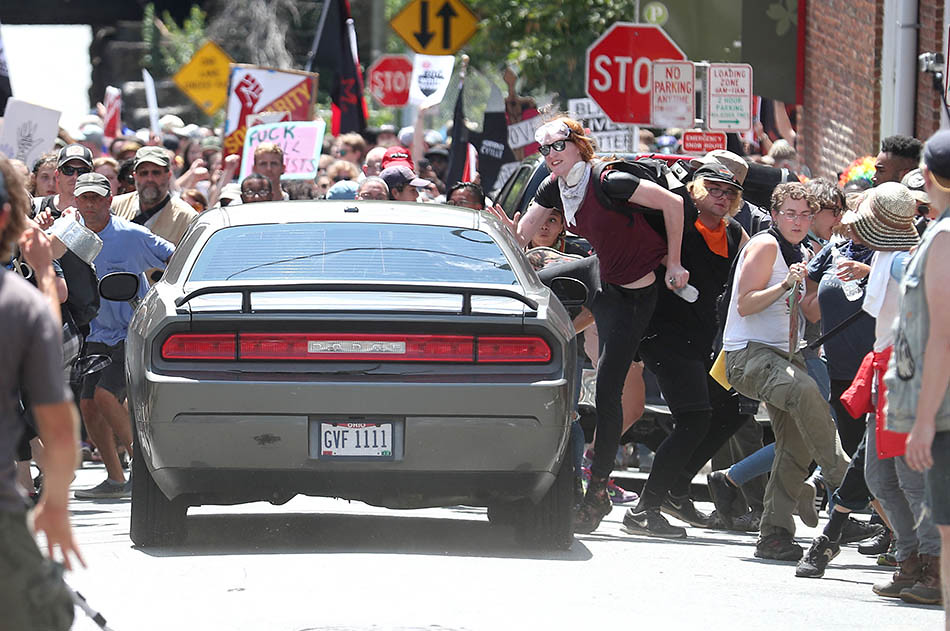
TID:
I also saw you on CNN, as Anderson Cooper interviewed you. What was that like?
RYAN:
That was a tough decision – the only time I went on camera was to do the Anderson Cooper interview. I felt weird about going on camera in general. I don’t have a history doing that, I’m always behind the lens. I don’t have much experience; it was nerve-racking. The rally was just two days before, I had started my new job that morning, I hadn’t slept much in a few days. I was kind of in a haze for a few days afterwards.
I pre-taped that at a local station in Richmond, and went out to a late dinner with a couple of friends. I had no interest in watching it, I was terrified of seeing myself. I had no sense of how it came off. I was just going to avoid it. Then, it came on at the bar we were at, so I was just staring at myself with no sound at the bar – and being like, alright, I hope this is going well. It was a surreal moment. But, I was still kind of in a haze at that point.
TID:
How has this impacted you?
RYAN:
I was completely absorbed in it for a couple of days. The rally was Saturday, which was supposed to be my last day at that job. Because of how that turned out, I volunteered to come in on Sunday, and help out because we didn’t know what to expect. So, I was sort of on standby just in case anything happened. I hadn’t had a chance to process what I saw, but I didn’t want to get sucked into it. I didn’t want to sit around refreshing my news feed, refreshing Twitter.
I think disconnecting from it helped a little. I stayed away from the news and social media as much as I could for most of the week. I came back to the news coverage of it a week later.
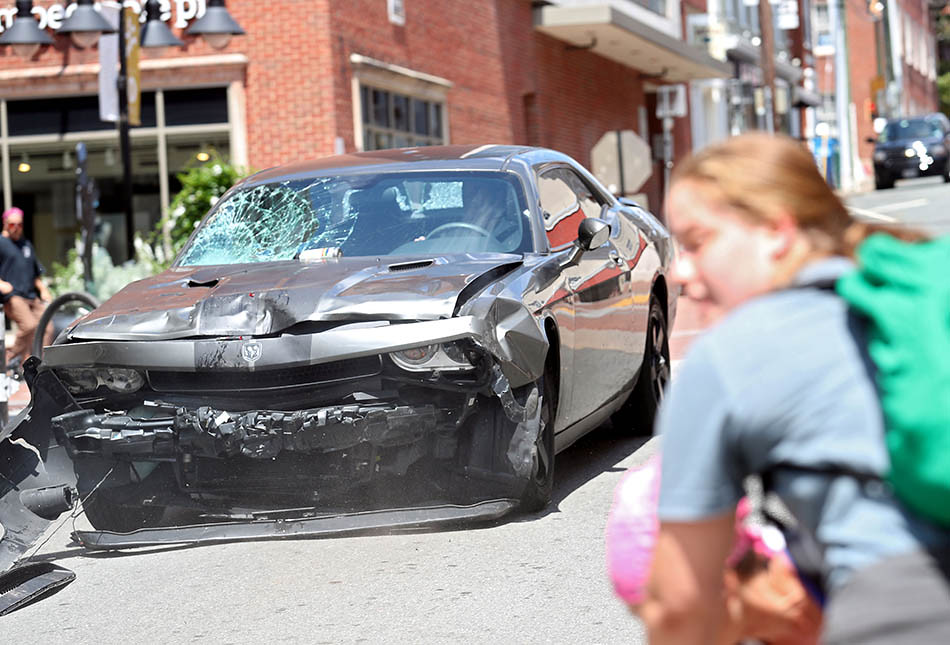
TID:
Has it changed you?
RYAN:
I feel like I’m the same guy. I’m the same photographer as I was before that. It was one wild moment. I’m sad that I saw that, it’s a rough thing to witness, but as a journalist for a number of years in the course of the job you see some rough stuff that you wouldn’t otherwise necessarily see, or want to see.
It’s definitely the most violent thing I’ve seen happen. I think getting away from it helped and it hasn’t loomed over me since then. It was tough getting away from it as you scroll through Facebook and you see that image being reposted everywhere.
Seeing that all the time was strange.

TID:
What is it like to see this photograph reposted over and over again?
RYAN:
I don’t think I have enough time and reflection yet. It’s strange for sure. It still feels like it was a strange day at work, but I had a lot of strange days at work. I had no experience with anything close to that. I’m relatively young and new to the industry compared to a lot of people. I had been at the Progress for 4 years, with a few years of interning, freelancing and student work before that.
Right after that weekend, I had some doubts if I still want to be leaving, starting a new career. I called a lot of my friends – some who worked in journalism, some who were photojournalists, some who were totally out of the industry – to bounce ideas off people. I think the best advice that I was given – that I was already thinking – they told me you were in the industry for a few years, but you were starting to get burnt out (which I was). I wanted to leave to go to Richmond because it was the right move for my wife and I together. It made sense for her work. It made sense for me to look elsewhere for a new job because the future of journalism, and photojournalism, is scary.
I don't know if I expected to make a career out of photojournalism forever, but for now it was the right choice to try something new. Daily newspaper work was still a grind. The pay and the hours were still going to be bad. None of that was going to change, just because of one photo.
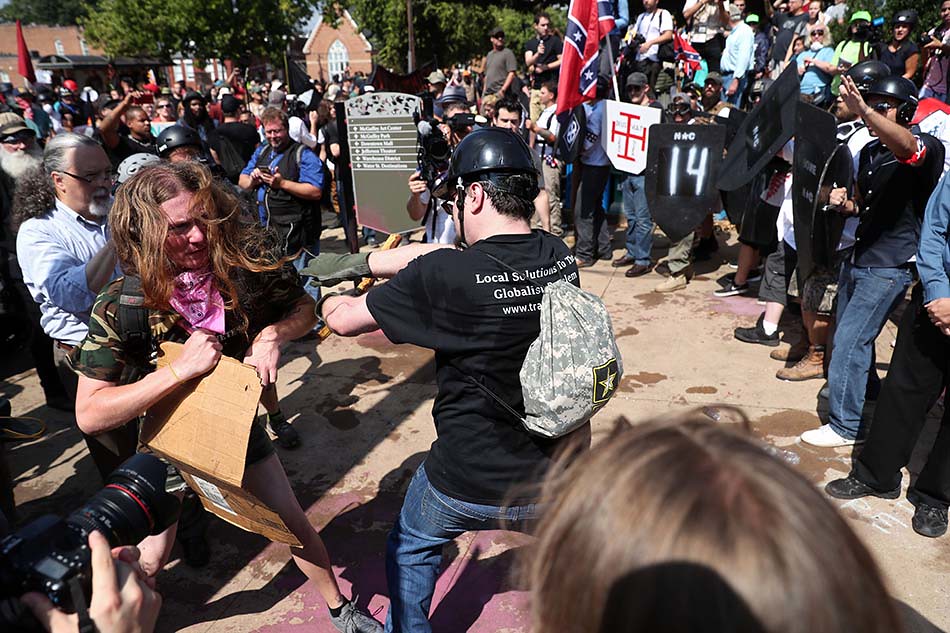
TID:
What was some of the reaction(s) of the media towards you?
RYAN:
All of a sudden the pictures are everywhere and you’re in the spotlight as much as the pictures themselves. The majority of the calls were TV to do an interview to talk about what I saw, not about the picture, necessarily, but as a witness to the attack. They wanted someone right away to talk about it, but I wasn’t interested. Most producers understood that. A few were pushier than I would have liked, that kind of rubbed me the wrong way and I told them no.
What I was most worried about was on Twitter and Reddit, some of the conspiracy folks. I was worried about my name being attached to a photo that became iconic. I was afraid of being targeted through social media for harassment, because you never know. If your name gets tossed in with the wrong group of people, they can go after you for no reason whatsoever. I was a little worried that would happen, but fortunately, it didn’t. I’ve been tagged in some weird conspiracy theories on Twitter, but it’s the been the minority. The vast majority have been supportive.
Sara Lewkowicz reached out to me. We met once or twice years ago. We’re Facebook friends, but we’re not particularly close. But, she reached out to me the next day and she was a great resource for me to talk to, because she had gone through sort of a similar thing. She shot me a Facebook message, and I was actually thinking about reaching out to her before. So, as soon as she did that I said, ‘Can we talk on the phone?’ and we were talking on the phone pretty quickly after that. That was really helpful.
The best advice she gave me was to do what feels right, don’t feel bad about saying no to people, don’t feel bad about saying yes to people. Just do what feels right and don’t overthink it.
That was important.
I didn’t want to be opportunistic about this, because it was an awful tragedy. I didn’t want to personally gain from this. But, at the same time, I felt bad about saying no to media outlets, because I’d been in that position where I’m trying to talk to people who don’t want to open up about a news event.
After that, I could say no to people, I could say I’m not ready to talk; I could say yes to people that I felt comfortable talking to and not feel stressed or anxious about it, which I had up to that point. I had some guilt about saying no to people, just as much as I had as guilt about saying yes to people. I couldn’t win in my own head. But, it’s an important and newsworthy moment, so I saw both sides of every answer I gave (yes or no to media requests) and just overthought it. I’ve kept Sara’s advice in mind since then and it’s helped keep me calm and centered.
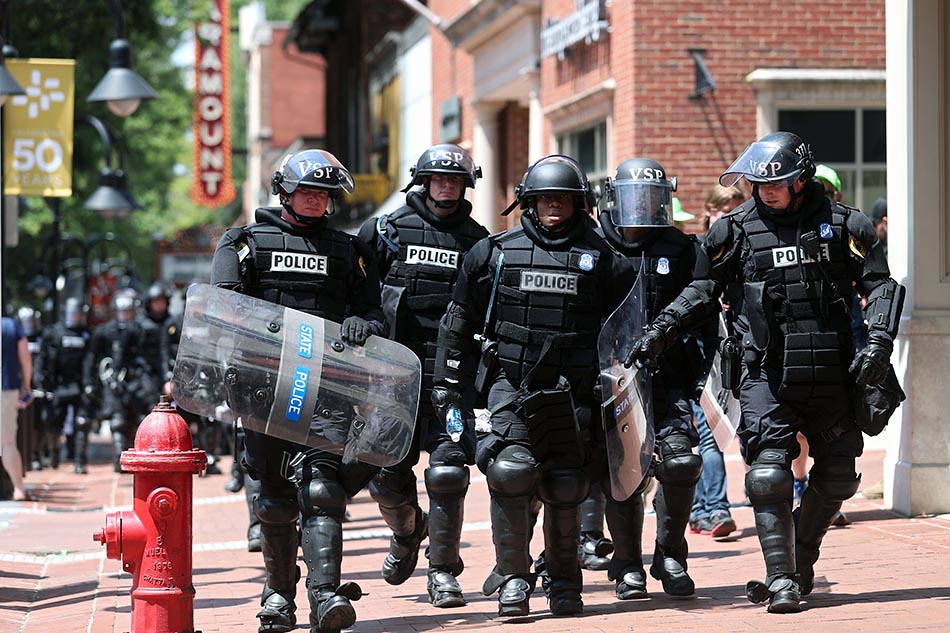
She was not the only one who reached out, I should add. I had plenty of people who reached out, both people I knew and didn’t know from the photojournalism community.
For the most part, all were very supportive and sensitive. I had a few people who were just like, "Hey man, great job. Way to kick ass. You did amazing," and that felt very wrong to me, because it was an attack. It was a tragedy, somebody died. Dozens were injured. It was something traumatic to be a part of and to a lesser extent to witness.
That felt very strange to me. But again, that was the minority. Most people who reached out said things like, “I understand you’re going through a lot. Take time, do what you need to do. If you need to talk, I’m here." That sort of thing. That was definitely the majority of the comments from people in journalism, specifically in the photojournalism community, and that was helpful to hear.
TID:
What’s next for you now? Have things settled a bit? You’ve recently started a new position as a digital and social media coordinator in Richmond for a brewery.
RYAN:
I’m fine now. Things have settled down in my life – it was obviously a chaotic time. Now, it’s the polar opposite of journalism, it’s a 9-5 desk job, it’s pretty low stress, I get to set my own hours. I’m able to freelance a little still, but it’s been an adjustment. I’m missing the daily grind a little bit, bit I have to keep reminding myself that the grind was not the enjoyable, exciting, impactful stuff in journalism.
TID:
What advice do you have for photographers?
RYAN:
All the advice I’m thinking of is the advice I was told when I was young. Some of it stuck, and some of it I brushed off and scoffed at. Photojournalism is hard. It doesn’t pay well; the hours aren’t great. You really have to love doing it every single day. The industry is just getting harder to make it. If you want to do it professionally, you gotta put in the legwork. You've got to network, you have to push all the time, it’s not an industry you can fall backwards into accidentally and have it work out. You have to push to make your own way.
It was a tragedy for sure. But I’m glad that series of photos exist. I’m glad I was able to do my job. I know for a fact I’m not the most talented photojournalist in the world. I wasn't even the most talented in Charlottesville that day. It was a combination of experience and instinct. Be as prepared as you can. Keep your head on a swivel and just be aware of your surroundings whenever you’re in a dangerous situation. Things can change in a hurry. You’ve just got to be aware.

::BIO:::
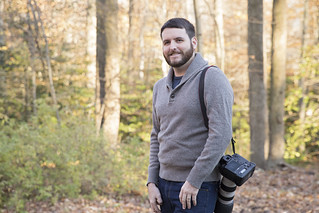
Ryan is a lifelong Virginian, raised in northern Virginia. Since then he has lived in Newport News, where he freelanced and interned at the Daily Press, and Charlottesville, where he was a staff photojournalist at The Daily Progress for four years. Ryan and his wife now live in Richmond, where he is pursuing freelance work covering news and sports.
You can see more of his work here: http://ryanmkelly.com/